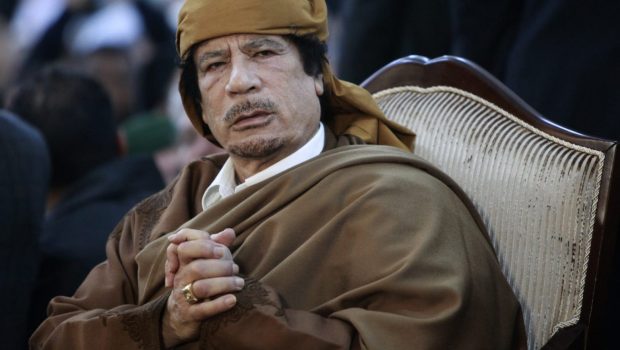
On October 20, 2011, Mr. Muammar GaddafiThe dictator who held Libya’s fate in his hands for more than 40 years was met with a violent death at the hands of the fighters of the Libyan National Transitional Council.
Since February 2011, with the spread of the Arab Spring movement of the popular uprising, the National Transitional Council has declared war on the Gaddafi regime seeking to overthrow it.
Natasha Bastiat wrote in “NEWS”, the day after Gaddafi’s death:
Forty-two years of harsh rule and seven months of heavy fighting and bombing by NATO forces ended yesterday with the death of Colonel Muammar Gaddafi, who became the first leader to die since the popular uprisings of the Arab Spring. 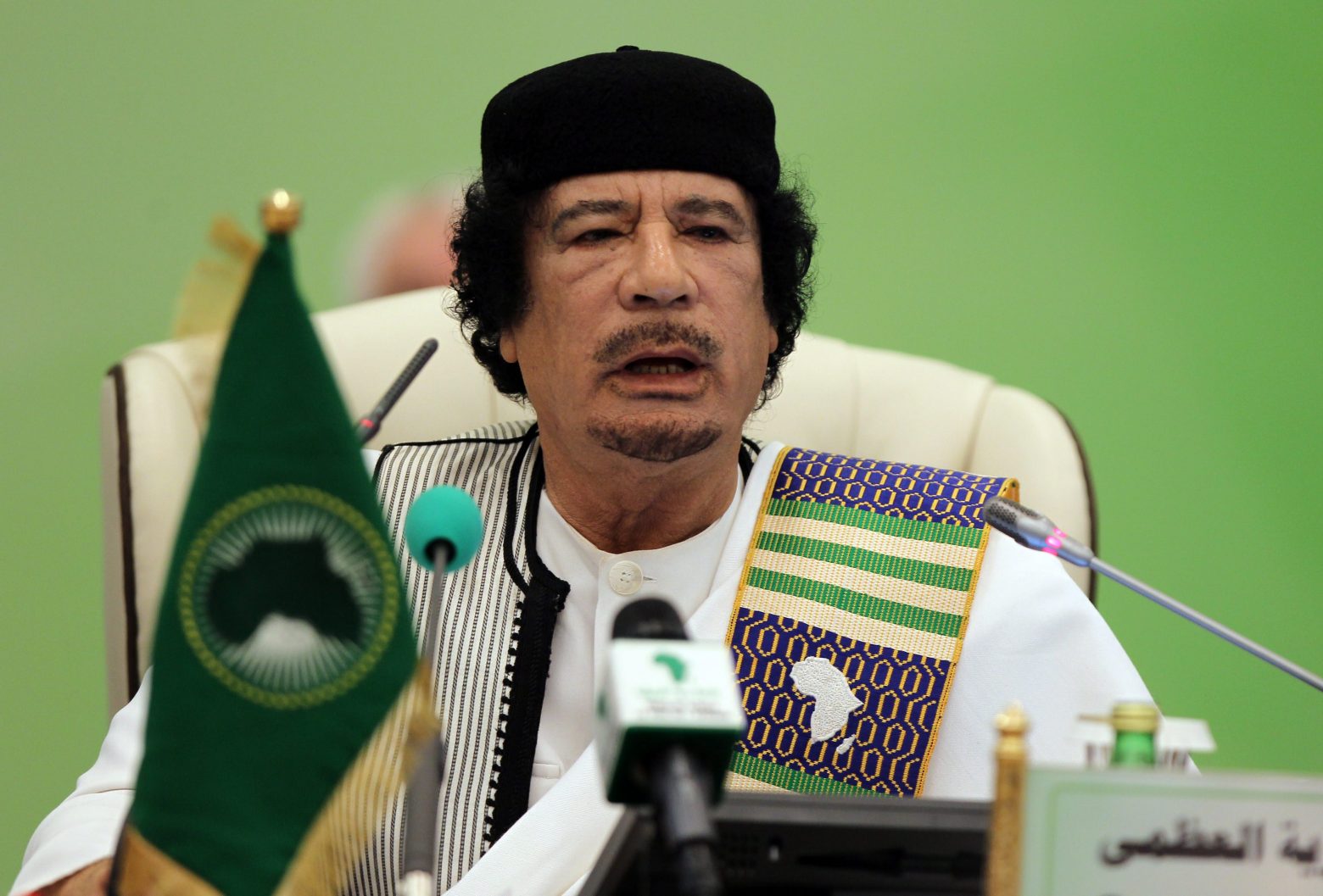
And thousands of Libyans took to the streets to celebrate that the end of Gaddafi would also mean the end of the bloody civil war, so that the country could begin to rebuild.
» The video of Muammar Gaddafi’s body stained with blood, shot in the head, while being transported by car to Misurata, where it was placed inside a mosque, raised the world’s tallest. “We have been waiting for this moment for a long time,” Libyan Prime Minister Mahmoud Jibril said shortly after, stressing that he could now declare the “liberation of the country.”
A little later, a Libyan channel broadcast another video clip that was early. Gaddafi was alive but wounded and clearly weak, and he was riding in military fatigues with his captors in a stopped car.
“The gunmen took him out and he was trying to stumble and trying to talk while the men around him were beating him and shouting (God is great).
Warning, harsh images:
Around the same time, a third video was released showing the now-dead Gaddafi, shot in the head, lying dead on the sidewalk with gunmen turning his now half-naked body and celebrating by shooting in the air.
“One can reasonably conclude that he was executed in the meantime – either in the ambulance or outside. Yesterday evening, Libyan television broadcast a fourth video, showing fighters inside with the body of the colonel and celebrating.
The stark images led to a violent end to four decades of Libya’s rule – from 1969 to last August – by Gaddafi, who once claimed the title of “King of Kings of Africa”. And of course now the NTC heads will have to explain why Gaddafi, as they promised, was not tried, and instead executed by the gunmen who captured him – although the Libyan prime minister insisted last night on this. Gaddafi was killed in the crossfire and did not order his execution.
His relations with the West
As Pericles Dimitropoulos wrote, Gaddafi’s relations “with the West and the United States reached their worst point in the 1980s. In 1986 the US Air Force launched an attack on Tripoli.
Two years later, a Pan Am passenger plane exploded over Lockerbie, Scotland. Traces of the offender lead to Libya. From that episode onwards, the attitude of the self-proclaimed “King of Africa” man began to change.
“In the 1990s, the colonel began making business deals with his old enemies. His last trip abroad was to Rome led by Silvio Berlusconi. There the colonel had the opportunity to make his last show. ”
Elounda agreement
Around the mid-1980s, Greek Prime Minister Andreas Papandreou made an official visit to Libya while developing his contacts with Middle Eastern leaders. Maria Luca wrote in “VIMAGAZINO” (29 June 2014):
The visit came in consultation with Yasser Arafat, who at the time was supported by the regimes in the Middle East and North Africa. (…) The two leaders will agree on a joint endeavor to withdraw all foreign forces from the Mediterranean. The mission, after roaming for hours in the desert in a jeep, they end up in Gaddafi’s tent welcoming them in military campaign uniform.
He added that “the great benefit of this visit is that since then Libya will vote for Greece in the United Nations regarding the Cyprus issue. Members of the mission carry in their baggage returning to Greece his “green book” and a series of papers with financial agreements, many of which have remained at this level. .
“A few months later, after the outbreak of war in Chad between Libya and France, the Secretary-General of the Ministry of Public Order and close aide of Andreas Papandreou, Costas Tsimas, took on the top-secret mission of Gaddafi’s safe residence on Crete. On November 15, 1984, the Elounda Hotel opened, Which was closed due to winter, its doors to welcome Colonel Muammar Gaddafi and President of the French Republic, François Mitterrand.The eccentric colonel was accompanied by 80 female guards.
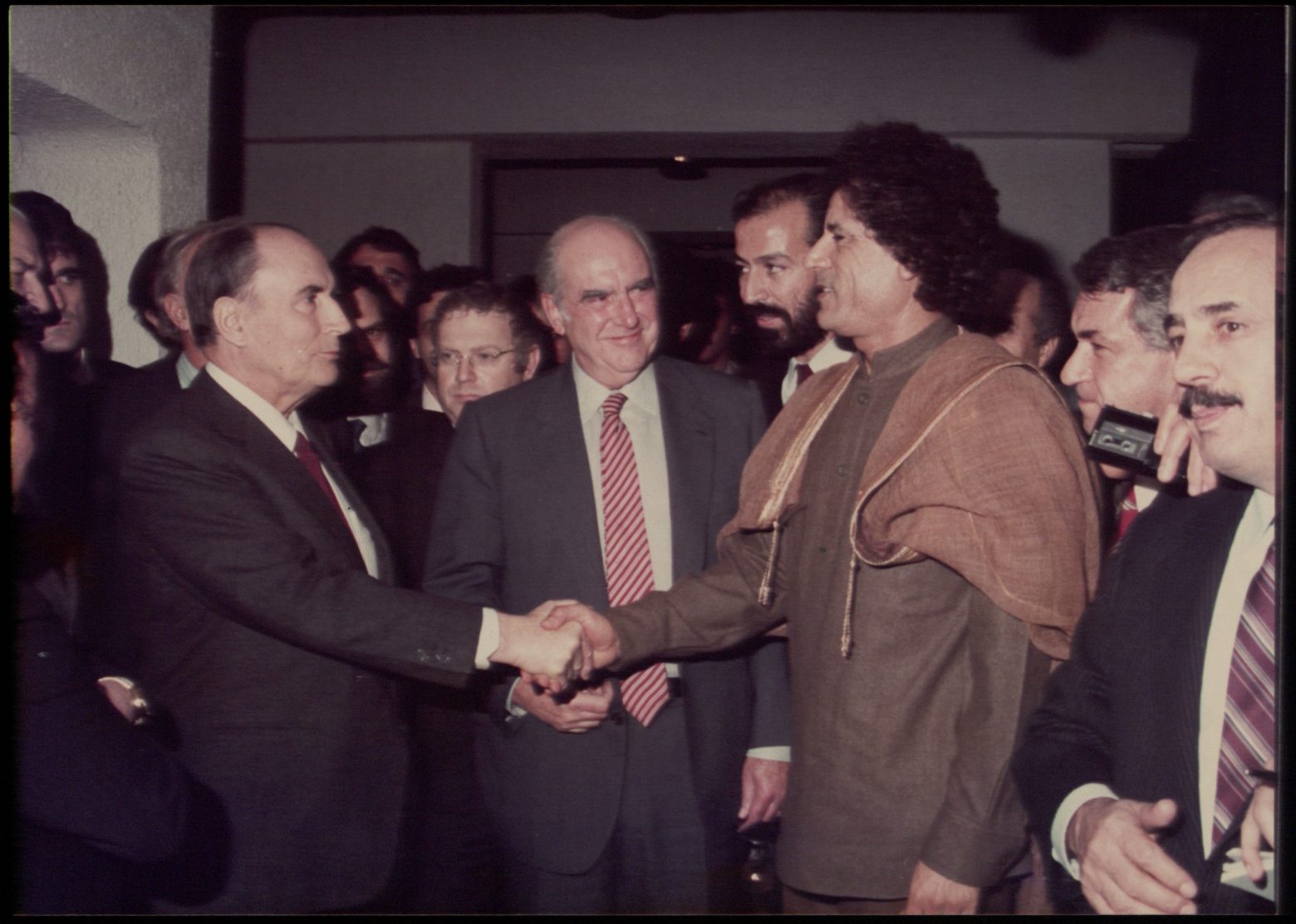
Francois Mitterrand, Andreas Papandreou, Muammar Gaddafi
Andreas Papandreou puts the two leaders at the same table and those negotiations will end in the infamous ‘Elounda Agreement’. The successful Greek mediation further displeased the Americans. After PASOK’s electoral victory in 1985, Gaddafi would send a congratulatory letter to Andreas Papandreou and reaffirm the common goal of ‘final victory’ for socialism.”
Mitterrand asked Papandreou for help in the crisis with Libya. Papandreou called them without telling one of the other’s presence. Everything was done in complete secrecy. Journalists found out as soon as the agreement was reached. Andreas also had a personal relationship with Gaddafi that no one managed to sustain. The Arab world has distinguished the diversity of the leader of the PASOK party,” says Esmat Sabry.
As Perilis Dimitropoulos wrote: “A man who was born in a Bedouin tent overthrew the king of his country at the age of twenty-seven and remained in power for nearly four decades, believing from a young age that life had a special destiny in store for him.
“After his glorious path he might have expected a glorious death. But the end of this fate was humiliating. The “mad dog of the Middle East,” as Ronald Reagan once called him, dies isolated from friends and foes while watching his system collapse and searching for an escape route that never came.
“Until the outbreak of the rebellion, he was a unique dictator with whom the West was no longer waging war, but dealing with. According to a cable from the US Embassy in Tripoli leaked by WikiLeaks, Gaddafi was so ill that he filmed his medical examinations to discuss them with his doctors, and rarely He wouldn’t come out without his Ukrainian nurse by his side, while he resorted to the services of Botox.”
today
Libya today is divided and has two prime ministers with two opposing armies.
Abdel Hamid Dabaiba resides in Tripoli and Fathi Bashagha, the city of Tobruk.
Wolfram Lacher, an expert on Libya from the Science and Policy Foundation, describes the current situation in Libya as part of an “unending story” and talks about allies rallying today, fighting together, and tomorrow against each other. It also refers to international actors (Russia, USA, France, Italy, Egypt, UAE, etc.) who maintain armed forces, cooperate with different rulers and want to do business.

“Hipster-friendly coffee fanatic. Subtly charming bacon advocate. Friend of animals everywhere.”

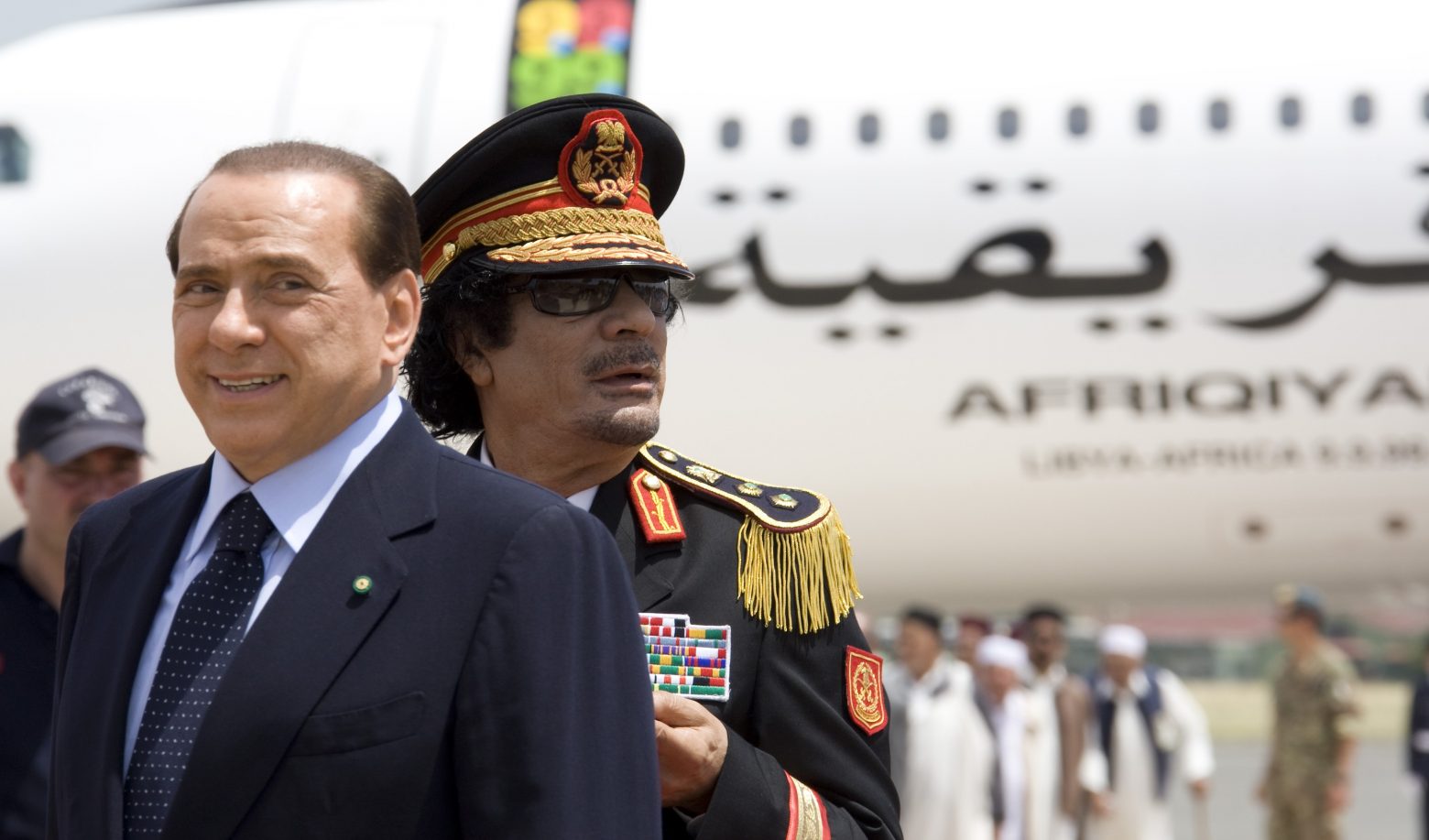
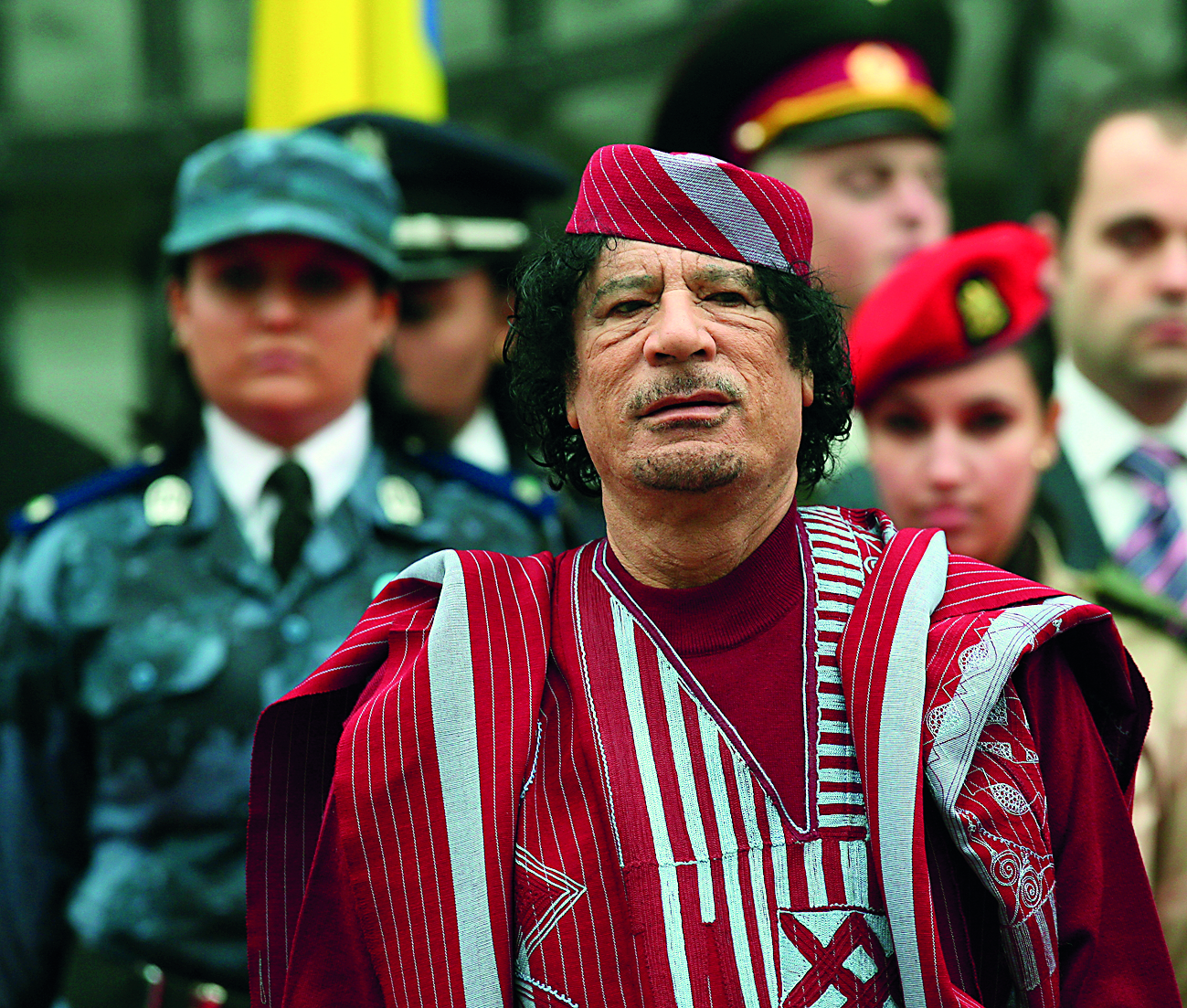




More Stories
F-16 crashes in Ukraine – pilot dies due to his own error
Namibia plans to kill more than 700 wild animals to feed starving population
Endurance test for EU-Turkey relations and Ankara with Greece and Cyprus